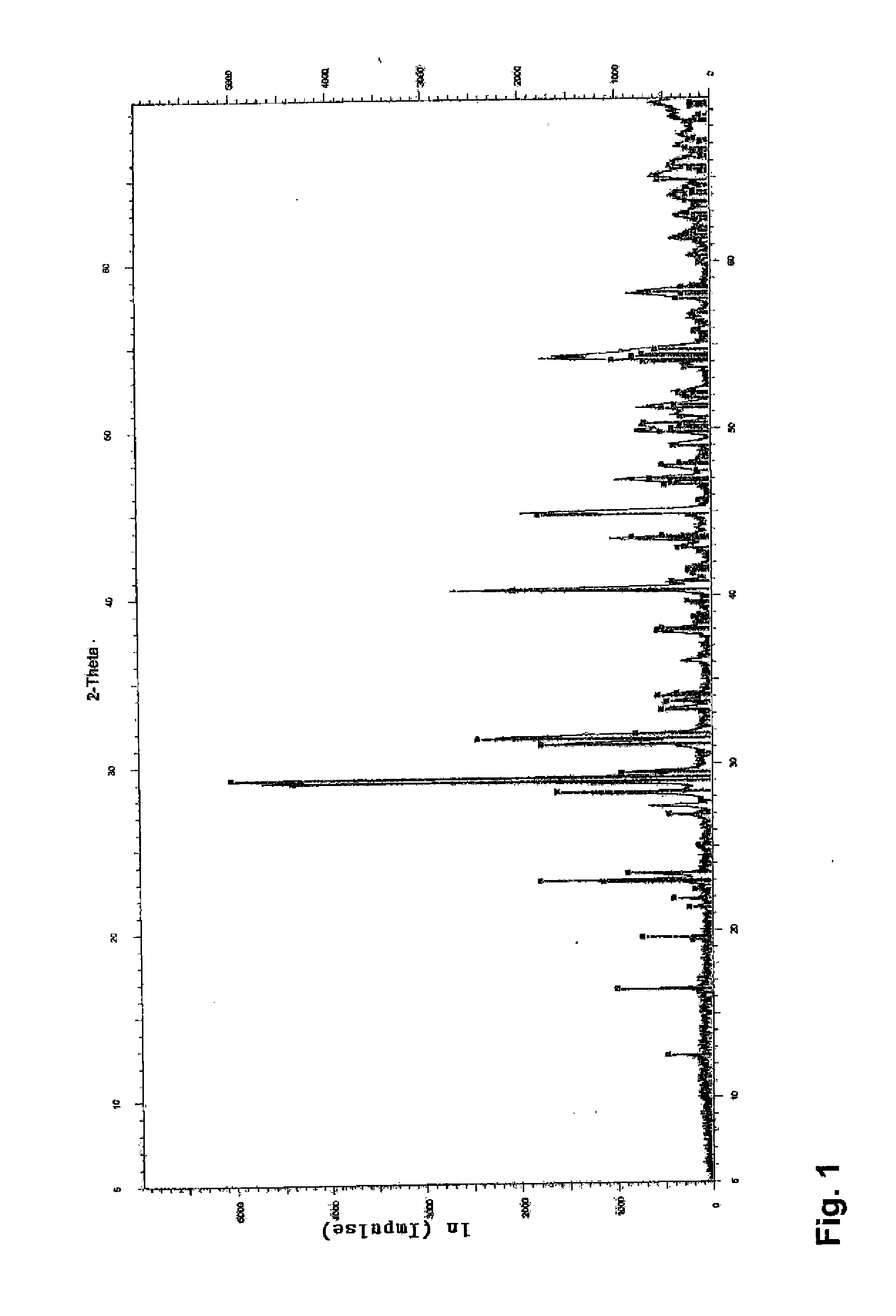Glass ceramics for use as a dielectric for gigahertz applications
a technology of glass ceramics and gigahertz, applied in the direction of electrical equipment, radiating element structural forms, and antennas, can solve the problems of high cost of system using bismuth and niobium in terms of raw materials, geometric inaccuracy and corresponding final machining, and certain residual porosity, etc., to achieve low dielectric loss, high relative permittivity, produced and processed
- Summary
- Abstract
- Description
- Claims
- Application Information
AI Technical Summary
Benefits of technology
Problems solved by technology
Method used
Image
Examples
examples
[0043]Table 1 shows various glass compositions for a starting glass in the system Ba—La—Ti—Si—O.
[0044]The various glass samples of Examples 1 to 9 are firstly melted and homogenized in the usual way using conventional starting materials, with platinum crucibles, PT / RI crucibles, PT / RH crucibles, fused silica crucibles or aluminium oxide crucibles being able to be used. The samples are firstly melted at 1350° C. for 2 hours, then refined at 1400° C. for 30 minutes, stirred and homogenized by means of a platinum stirrer for 20 minutes, allowed to stand for 10 minutes and then poured into suitable moulds made of, for instance, steel, graphite, aluminium oxide or fused silica and then brought to near net shape.
[0045]After cooling to room temperature, the glass is subjected to a ceramicization step, which can be carried out, for example, by means of an infrared heating process or by means of a conventional process.
[0046]A typical ceramicization cycle by means of an infrared furnace is as...
PUM
| Property | Measurement | Unit |
|---|---|---|
| relative permittivity | aaaaa | aaaaa |
| crystallite size | aaaaa | aaaaa |
| relative permittivity | aaaaa | aaaaa |
Abstract
Description
Claims
Application Information
 Login to View More
Login to View More - R&D
- Intellectual Property
- Life Sciences
- Materials
- Tech Scout
- Unparalleled Data Quality
- Higher Quality Content
- 60% Fewer Hallucinations
Browse by: Latest US Patents, China's latest patents, Technical Efficacy Thesaurus, Application Domain, Technology Topic, Popular Technical Reports.
© 2025 PatSnap. All rights reserved.Legal|Privacy policy|Modern Slavery Act Transparency Statement|Sitemap|About US| Contact US: help@patsnap.com

